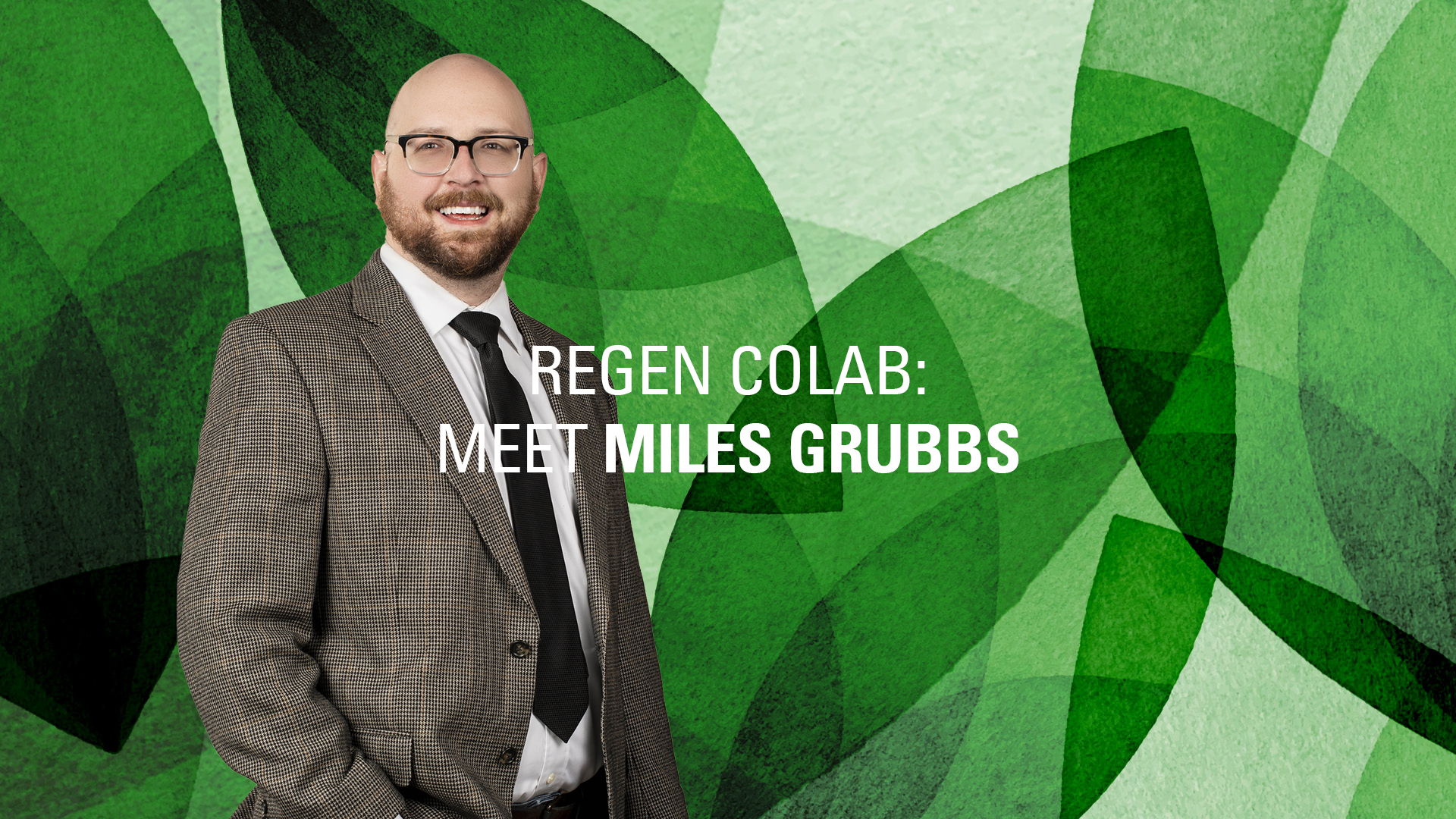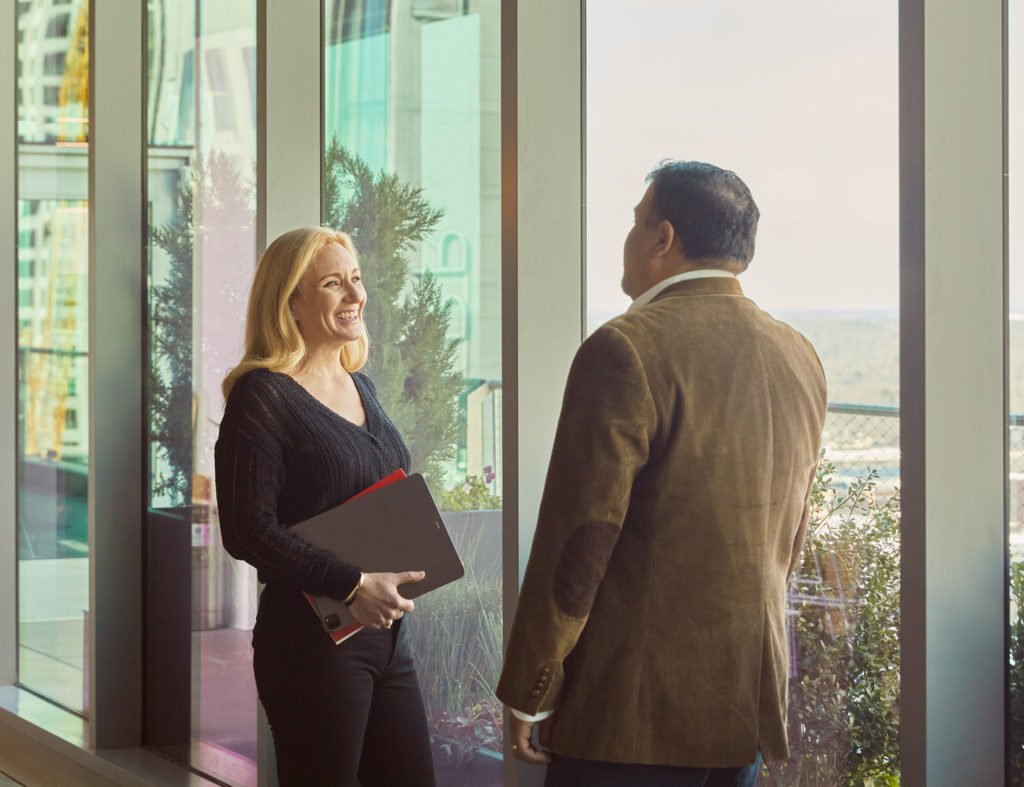At Little, we are committed to a regenerative future and driven to evolve from awareness to action. Our Regen CoLab is a talented team of collaborators who focus on building a culture of regenerative practice within Little. We are excited to spotlight these individuals and share how our focus areas of measurement in Health, Energy, Water, and Social Equity (HEWS) set a path toward a regenerative future. Today we are introducing the newest Regen CoLab director Miles Grubbs.

From a young age, Miles Grubbs was immersed in the design world. With architects and engineers on both sides of his family, the built environment was never far from his thoughts. But his path to regenerative design didn’t follow a straight line—it evolved organically from his technical roots in energy modeling and mechanical system design to a broader, more holistic understanding of impact.
Seventeen years ago, Miles began his career focusing on energy efficiency and sustainability. A decade ago, he joined Little, drawn to the unique opportunity to work at an integrated architecture and engineering firm. “By bringing together designers of all types into alignment, opportunities can be found that may not otherwise have been evident,” he shares. That collaborative spirit helped unlock his passion for whole-building design—optimizing building envelopes, aligning engineering systems with architectural intent, and always keeping occupant well-being at the center.
But it was working on his first WELL-certified project that opened his eyes to the broader potential of the built environment. “It changed how I thought about the impacts of our work,” says Miles. “Before that, I focused on systems and metrics. Afterward, I realized our decisions influence human lives in meaningful ways. Since then, I’ve been like Alice through the looking glass—exploring this richer, more connected world of design.”
DESIGNING FOR SOMETHING GREATER
To Miles, regeneration means more than sustainability. “Sustainability is like cruise control—it maintains a steady pace,” he explains. “But regeneration is about restoring, repairing, and reaching beyond the project’s footprint. It’s asking how our work can improve ecological systems, support future generations, and deliver economic and social value.”
That broader view underpins everything Miles does. With WELL and LEED accreditations, and as a certified Building Energy Modeling Professional (BEMP), he brings a deep understanding of how systems affect performance, health, and energy use. His rigorous, data-driven approach helps project teams evaluate trade-offs and make informed decisions early in the design process, often leading to creative solutions that save resources and enhance occupant experience.
Miles brings an engineering perspective that really strengthens our technical approach,” shares fellow Regen CoLab director Jen Todd. “He’s collaborative, grounded, and always focused on doing what’s right—which builds trust and inspires everyone he works with.”
MEETING PROJECTS WHERE THEY ARE
As a coach and mentor within Little, Miles is known for his ability to meet people—and projects—where they are. “There’s no one-size-fits-all when it comes to designing for regenerative outcomes,” he says. “If someone is passionate about reducing irrigation needs or cutting energy bills, that’s our starting point. From there, we expand the conversation.”
It’s that practical mindset that helps clients and colleagues alike see the value of regeneration. “At the end of the day, people want their spaces to support what they do—teach, collaborate, sell, heal,” Miles explains. “Good design allows us to use less energy, provide healthier environments, and give clients more time and resources to focus on their mission. That’s what makes regenerative design so powerful—it’s a tool for doing more with less, and doing it better.”
He also pushes back on the misconception that only large-scale projects can be regenerative. “Every project, no matter the size, can leave the world better than it found it,” Miles emphasizes. “It’s not about hitting a home run every time—it’s about consistently getting on base, making progress, and setting the stage for even greater impact.”
LOOKING AHEAD
Miles has a hopeful vision for the future. In the next decade, he sees the industry moving beyond net zero toward energy-positive and carbon-positive buildings—projects that not only offset their impact but actively contribute to ecological and social resilience. He also envisions a world where resiliency is tailored to the unique challenges of each site, and where regenerative principles are the norm, not the exception.
“I want to leave behind a legacy that shows it can be done—that great architectural and engineering design can work together seamlessly to create something truly better,” Miles shares. “If the next generation can look at our work and feel empowered to go further, that’s the best outcome I could hope for.”
Miles Grubbs is an engineering leader focused on creating regenerative outcomes through integrative, data-driven design. With nearly two decades of experience in building performance, energy modeling, and sustainable systems, he challenges teams to consider a wider lens, helping clients and colleagues make smart decisions that benefit people, communities, and the planet. As one of five Directors of Little’s Regen CoLab, Miles is helping to cultivate a firmwide culture of regeneration—one thoughtful design decision at a time.
Interested in learning more? Check out previous employee spotlights featuring Little’s Regen CoLab: Jen Todd | Philip Donovan | Vickie Breemes | Scott Brideau

